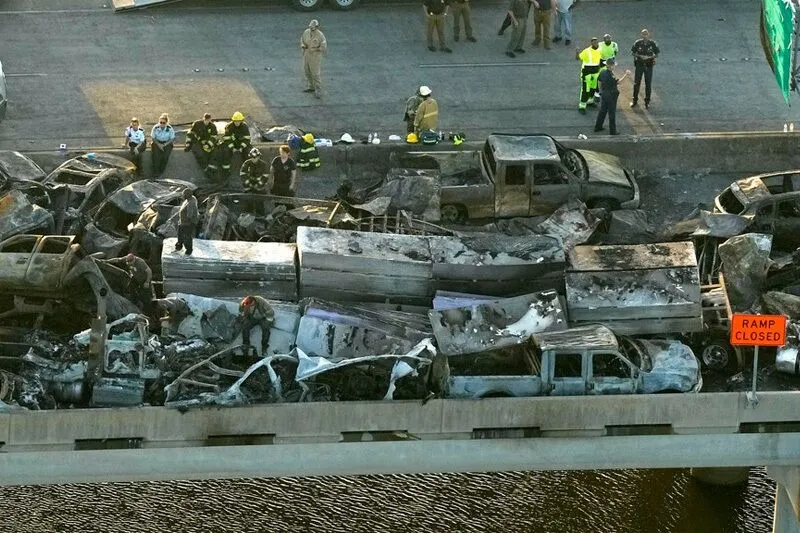Superfog: Understanding How Louisiana’s Deadly 158-vehicle Pileup Unfolded
At least 158 vehicles were involved in incidents on the northbound and southbound lanes of Interstate 55 in Louisiana on Monday morning that claimed the lives of seven individuals.
The incidents, which left a miles-long path of smashed and burned-out vehicles and more than two dozen additional people hurt, were partially caused by an abnormally thick layer of fog.
Local authorities said that wildfires nearby exacerbated a hazardously thick “superfog” that led to the massive vehicle pileup north of New Orleans.
The National Weather Service reports that superfog can reduce visibility to less than 10 feet, with the worst cases known to allow for nearly nil visibility.
When moisture in the air combines with smoke from burning brush, leaves, and trees in swampy marshlands, notoriously low vision conditions are created.
Superfog conditions are infrequent, however they do occasionally occur in the South due to marsh fires, calm winds, and humidity, which can all combine to produce thick layers of fog.
Smog and superfog both impair vision. The latter is known to happen when air pollution mixes with fog to generate hazy conditions that are bad for one’s health, although the two are different.
Early Monday morning low visibility in Louisiana was virtually gone by the afternoon, however fog advisories persisted over a small portion of the state into Tuesday.
Local authorities advised people to avoid the area and exercise caution when moving about on Monday because dense fog was “heavily impacting” some sections of the interstate.


Comments
Post a Comment